Gearing up for autumn: A helpful guide to shooting fall landscapes from start to finish
posted Friday, September 2, 2016 at 5:58 AM EST
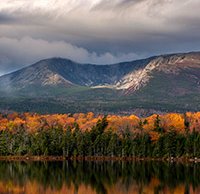
As we near autumn – at least in the northern hemisphere – some of us will be starting to see bits of red, oranges and yellows appearing in the foliage. Photographing these beautiful autumn colors seems like it should be easy, capturing great shots ought to be like shooting fish in a barrel, but that’s not always the case and there are some pretty simple ways to give your fall landscapes a boost.
Equipment: Don't forget your filters!
Let’s first discuss the gear you need to capture awesome autumn shots. Besides your camera of choice, you’ll want a wide-angle lens for landscape work. Don’t sleep on longer lenses for landscapes, but a wide lens should be the priority. To accompany the lens, a polarizing filter is a very useful tool for landscape photography in general but fall photography in particular. Reflections can regularly rob leaves of their best color, so a polarizing filter is critical for cutting down on reflections. It can be tempting to use the polarizing filter to enhance the blues in the crisp autumn sky, but I find that when shooting with a wide angle lens the results can sometimes look unnatural and I prefer to combine a non-polarized image of the sky with the polarized foreground.
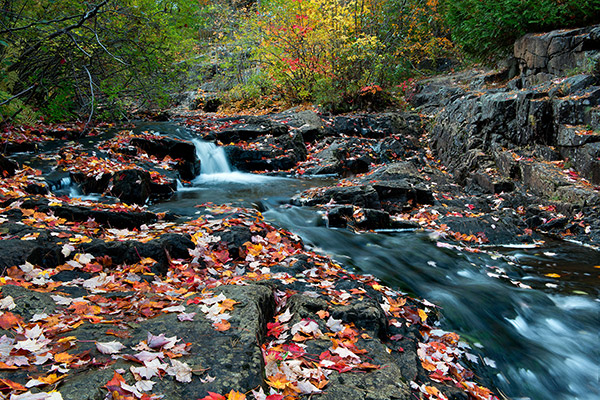
A less critical item -- but still a staple of my photography bag -- is a graduated neutral density filter. While this filter’s effects are able to be reproduced in Photoshop, unlike the effect of a polarizing filter, I still prefer to do as much as possible in camera. If you want to shoot long exposure fall images, and who doesn’t love a good autumn stream or waterfall shot, you need a solid neutral density filter. Considering you’ll likely be shooting at apertures like f/8 or f/11, you don’t necessarily need a Big Stopper, but a 3-5 stop filter is good to have on hand. If you’re looking at long exposure fall photography, then you definitely need a stable tripod and you should also look into a remote release, either using a smartphone app or a dedicated remote control, whether wireless or cabled.
My personal go-to kit come fall is a Nikon D800E, Nikon 24-70mm f/2.8G with a B+W circular polarizer filter, a Lee filter holder, four-stop neutral density filter and a three-stop soft-edge graduated neutral density filter. I affix the camera to my tripod and use a Nikon MC-36A remote release, which is overkill for this particular type of photography, but it’s a great style of remote for night photography.
Location, Location, Location
Location is always important, but a good composition can be the difference between an "okay" photo and a "great" photo. I’ve been overwhelmed by the color in autumn scenes before, and my photos -- at least when viewed in hindsight -- suffered for it. A great thing to do is get out and scout for autumn landscape opportunities before peak foliage hits. If you’re unfamiliar with the fall colors and timing of different deciduous trees, check out this guide. So when looking for a potential fall composition, make note of the types of trees you observe. Consider whether or not there is a big variety of trees in an area or if distribution is mostly uniform. Not all leaves change color at the same pace, so sometimes a single location can change dramatically during fall colors season. Weather also impacts fall foliage considerably. You can read more about that here.
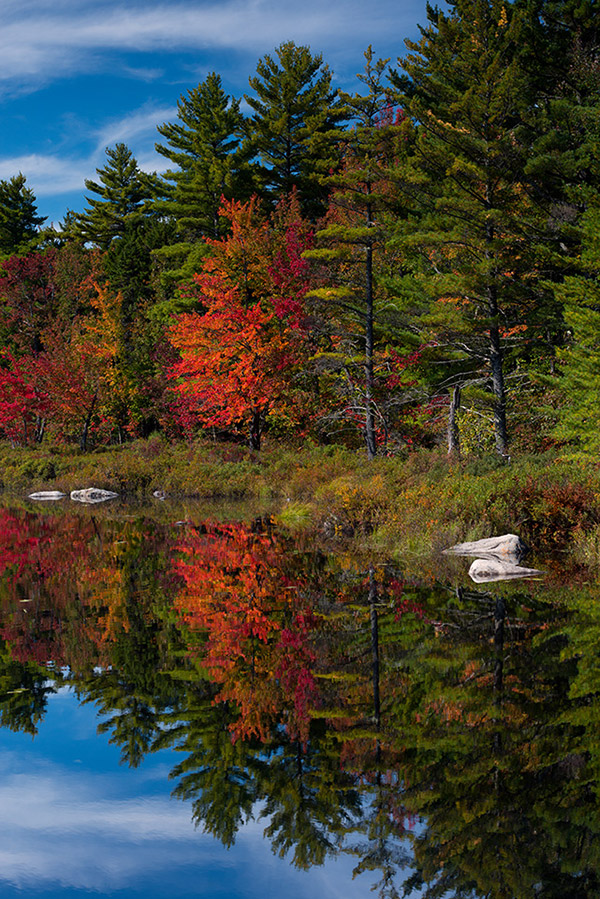
I personally look for areas with water -- either a lake, stream or waterfall -- because I love capturing reflections on calm, crisp autumn mornings. Water isn’t necessary for good fall images, of course, but that’s my personal preference and those are the scenes I look for. I prefer shooting early in the day because you’re more likely to get interesting fog in the morning and this can sometimes bring out the colors even more and add a nice sense of depth to a scene.
Some states, such as my own, have foliage maps that are regularly updated and give you an idea of the level of color change that is occurring in different parts of the state. It’s not a perfect system because there are some very localized variables that can effect how an area changes throughout the fall, such as elevation, soil wetness and much more, but it gives you great insight nonetheless and will allow you to better plan your excursions.
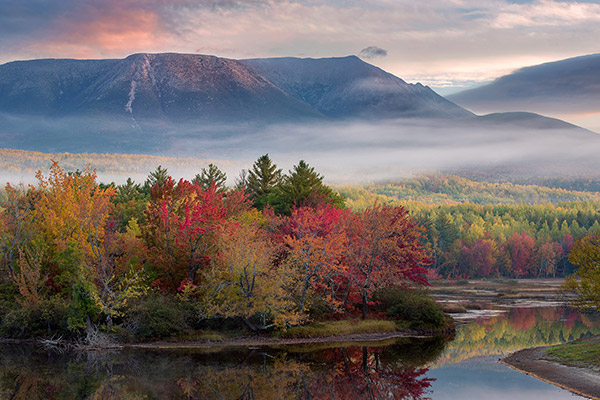
In the field: Colors and composition
Obviously particular shooting tips depend on your own personal style, but there are a few things that I think are basically constant. Firstly, shoot raw. While there are occasionally good reasons to shoot JPEG files, shooting raw is your best bet. Shoot raw+JPEG if you want to, just make sure you’ve got a raw file in the mix somewhere.
When out in the field, the histogram is your best friend. Usually I concern myself with just straight exposure, but clipping colors becomes a risk during the fall. To help get a sense of the scene you’re capturing on your camera’s LCD, shoot with the most neutral picture style your camera offers.
Regarding composition, keeping it simple and uncluttered becomes much more difficult in the autumn. The temptation to capture as much of the color as possible can be very strong. Fight it. Keep it simple.
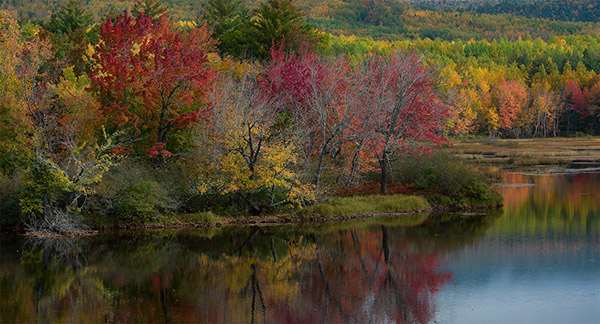
Color theory and how we perceive different colors is always important in photography, but it takes on increased importance when shooting fall landscapes. That lovely bit of red off in the corner may look nice against a sea of yellow, green and blue but to the viewer, it’s holding a giant “Look at me!” sign that may very well weaken your overall composition. Colors are compositional elements in a scene just like anything else, and can be the most important element, so keep that in mind both when scouting locations but also when composing your frame. Also, if you’re okay with moving elements in a scene around, don’t be afraid to move fallen leaves. A slight change can sometimes make a dramatic impact.
This tip isn’t unique to fall photography, but great landscapes aren’t always captured at eye level. Don’t forget to get low and see what a scene looks like. There are a ton of amazing fall photographs out there. Make yours stand out by utilizing a distinct perspective.
Post-processing: A subtle approach works well
Post-processing is a very personal, subjective aspect of photography so don’t take anything I say as gospel or think that your different method is being attacked; it’s not. For me, my autumn landscape workflow is not much different than my general workflow: some raw sharpening using Nik Sharpener Pro, adding contrast and removing excessive color casting and increasing both saturation and warmth. I typically add a bit more warmth when processing fall images and am more selective with saturation adjustments to ensure that I don’t overcook red in a shot (something that's all too easy to do).
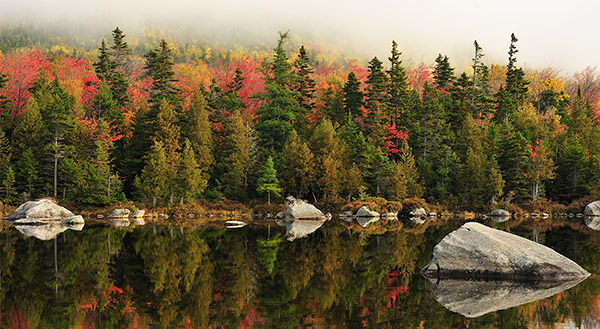
Concluding thoughts: Polarize, Scout and Simplify
If I had to sum up this article in just four simple tips for better autumn landscape images, they would be:
-
Use a polarizer filter to reduce reflections and increase the visible colors in the scene
-
Scout your locations ahead of time
-
Use simple compositions
-
Shoot raw
There’s certainly a lot more to it than that, but following these tips will get you on the right track.
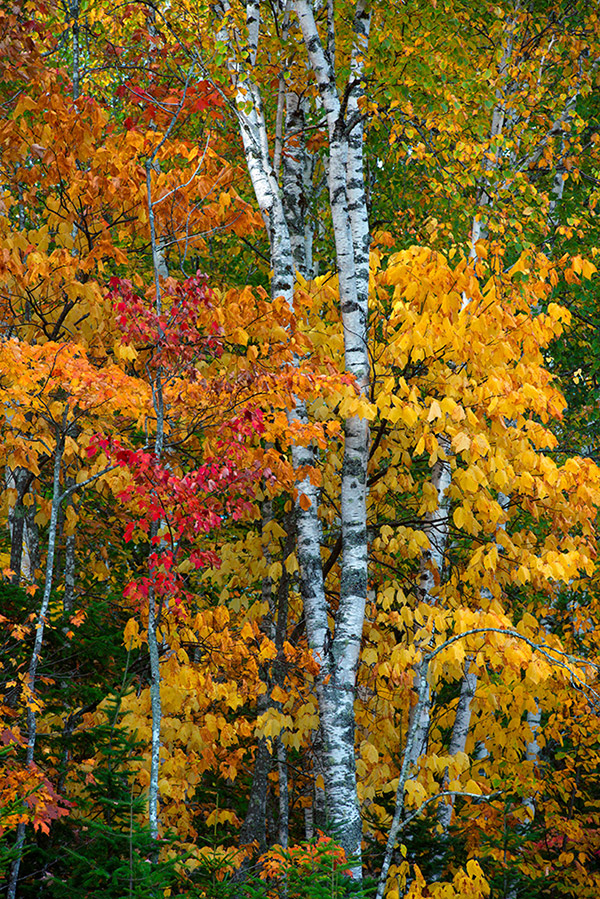
Readers, do you have any tips of your own to share? Any fall images of your own you’d like to show off? Let us know in the comments below!